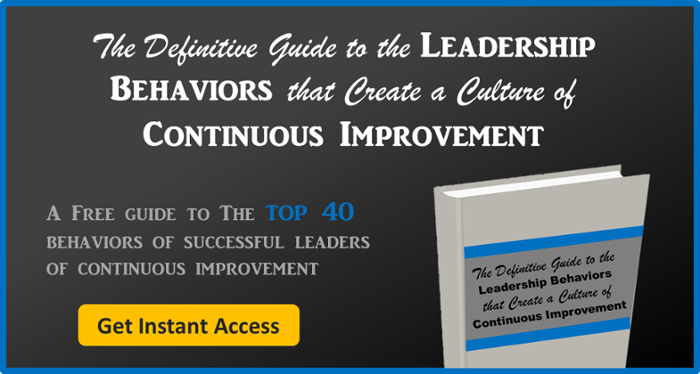 Kaizen events are a very useful tool for tackling some of your organization’s most challenging problems. They also help people learn how to practice continuous improvement and can be a powerful way to bring cross-functional teams together. However, they are incredibly demoralizing if they are poorly executed or applied to the wrong types of problems.
Kaizen events are a very useful tool for tackling some of your organization’s most challenging problems. They also help people learn how to practice continuous improvement and can be a powerful way to bring cross-functional teams together. However, they are incredibly demoralizing if they are poorly executed or applied to the wrong types of problems.
We’ve seen organizations make a bunch of damaging mistakes and seen good people get painted into some nasty corners. Don’t let it happen to you.
1. Believing that all improvement requires an event
While Kaizen events are very useful, they should not be deployed instead of daily continuous improvement. Rather, improvement work should be ongoing, with the events punctuating the process now and then.
2. Choosing the wrong facilitator
An effective Kaizen event requires strong leadership by someone who understands Kaizen, and who can communicate effectively with all stakeholders. You may have someone on your team who can fill this role, or may consider a professional consultant.
Learn more about leading improvement here.
3. Failing to get executive support
Enthusiastic support from key company leaders ensures that employees will feel free to engage fully in the event and that the necessary resources will be made available. It is also the key to making sure that any changes made as a result of the event are long lasting.
4. Tackling the wrong problems
A Kaizen event usually lasts 3 – 5 days. Lots of problems can be addressed in that period, but some cannot. If a challenge is so large that even the most focused attention is unlikely to move the needle in short order, a different approach to improvement should be used.
5. Allowing scope creep
The beautiful thing about Kaizen events is that they allow for focused energy on a clearly defined target. It is very easy for teams to become sidetracked or distracted by other issues that might arise during the event. The facilitator must make sure this doesn’t happen by keeping everyone on track.
6. Failing to outline a vision of success
Before the event begins, it is important that everyone involved understand what success looks like. This means defining the current baseline, identifying challenges, and deciding which metrics will be used after the event to determine whether the desired outcome was achieved.
7. Inadequate training
To be an effective event participant, each member of the team should have some prior training regarding the Kaizen philosophy, the structure of the event, and any tools that will be used during the process, such as Value Stream Mapping, the PDSA approach, or the 5 Whys.
8. No technical support
It is essential that all of the work done during your event is captured so that results can be measured over time, and so that what you learned during this event can be applied to the next one. Using a software solution that is designed to bring structure to improvement work is the best way to make sure that nothing falls through the cracks during the event and that the results remain long afterward.
We hate it when good intentions go wrong, so keep these common mistakes in mind as you get ready to address your challenges head-on. If you do, we’re sure your next Kaizen event will be a big success.



Add a Comment